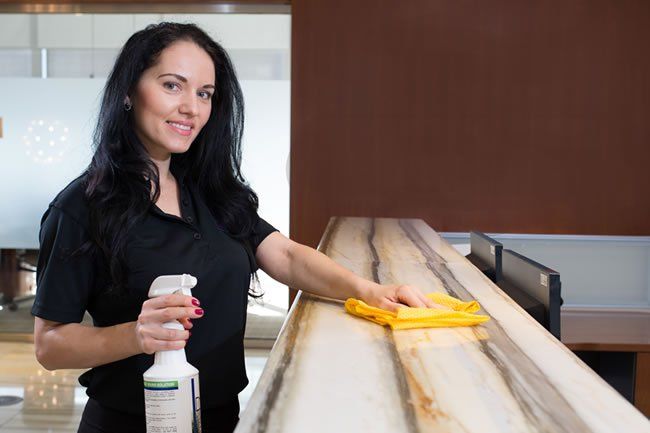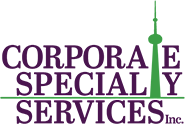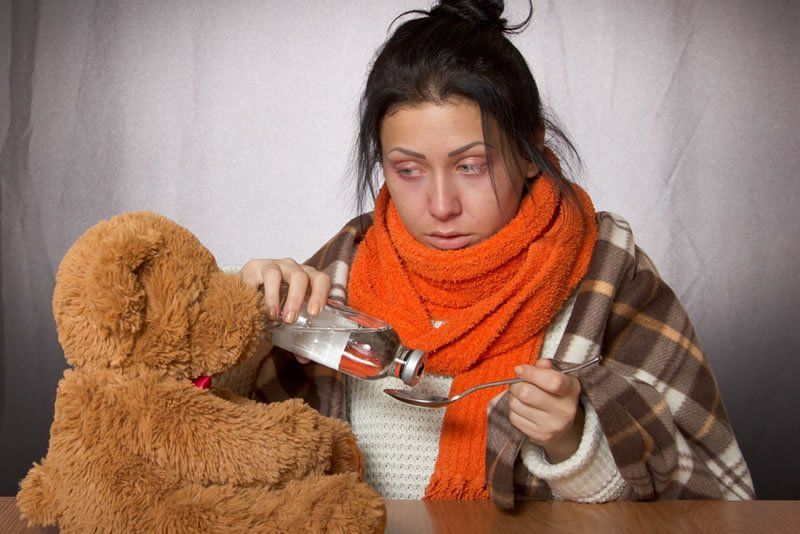Blog Post
What You Need to Know About the Science of Clean
- By Steve Martin
- •
- 07 Apr, 2017
This is a subtitle for your new post

This old expression can certainly be applied to the science of clean. Traditionally, cleaning meant that seen dirt was removed. Sweeping, dusting and wiping removed visible dirt. Dirt gone, problem solved - right?
Not so fast! Today, cleaning involves so much more. Because there are things that can't be seen that can indeed hurt you, your employees and your customers. This unseen 'stuff' left behind could very well be impacting your bottom line.
Your facility cleaning strategy needs to address those unseen concerns:
This philosophy, at its core, is flawed. You can’t simply spray sanitizers on soiled surfaces and walk away. The reason is found in science. Soil interferes with the oxidizing power of disinfectants. In effect, soil "shields" pathogens from the sanitizer which allows for the continued spread of disease.
True clean is a condition where there is virtually no soil on a surface. Thus, when an approved disinfectant is applied to that surface, infectious organisms are reduced to lower than their infective dose.
A solid cleaning strategy for your facility must include the following:
What tools can complement a solid cleaning strategy?
Not so fast! Today, cleaning involves so much more. Because there are things that can't be seen that can indeed hurt you, your employees and your customers. This unseen 'stuff' left behind could very well be impacting your bottom line.
Your facility cleaning strategy needs to address those unseen concerns:
- Microbial contaminants
- Chemical residues
- Bio- or chemical pollutants
This philosophy, at its core, is flawed. You can’t simply spray sanitizers on soiled surfaces and walk away. The reason is found in science. Soil interferes with the oxidizing power of disinfectants. In effect, soil "shields" pathogens from the sanitizer which allows for the continued spread of disease.
True clean is a condition where there is virtually no soil on a surface. Thus, when an approved disinfectant is applied to that surface, infectious organisms are reduced to lower than their infective dose.
A solid cleaning strategy for your facility must include the following:
- Making your facility visibly clean which translates to removing the most soil particles.
- Disinfecting surfaces removing or killing the most pathogens possible.
- Using efficient processes that still deliver excellent results. These processes:
- Address 1 and 2 above
- Improve indoor air quality
- Reduce cross-contamination
- Address 1 and 2 above
What tools can complement a solid cleaning strategy?
- Approved disinfectants
- Colour-coded microfibre clothes
- Each colour is used for a specific cleaning task which reduces the chances of cross-contamination
- They pick up 99% of soil
- Help prevent germ spread
- Environmentally friendly as they can be washed and reused
- Each colour is used for a specific cleaning task which reduces the chances of cross-contamination
- No-dip flat mop
- Cleans hard to reach places
- Is never rinsed in dirty water
- Reduces cross contamination
- Cleans hard to reach places
- Hepa Vacuum
- Captures particles to reduce dust
- Helps improve air quality
- Quieter than most vacuums
- Captures particles to reduce dust
Better keep yourself clean and bright; you are the window through which you must see the world.
~ George Bernard Shaw
~ George Bernard Shaw
Share
Tweet
Share
Mail
You might also be interested in
Keeping Greater Toronto Area facilities spotless since 1995.
Corporate Specialty Services Inc.
23 Gloucester Street, Toronto, Ontario M4Y 1L8
416-391-1020
© 2025
All Rights Reserved | Corporate Specialty Services Inc. | Website by Crimson Leaf Studios.


